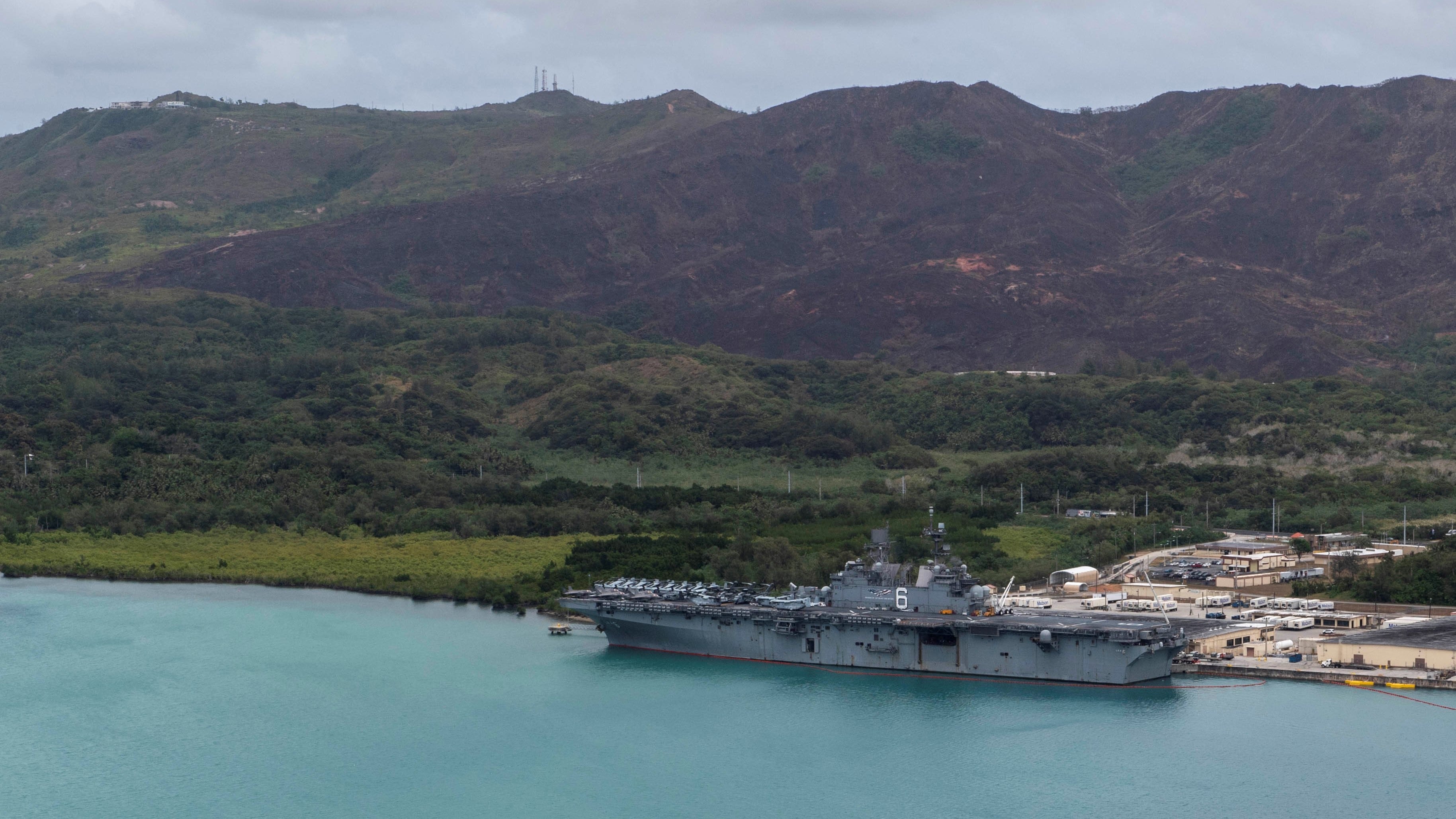WASHINGTON — The top Republican on the House Armed Services Committee will release a proposal Thursday to formally create a new fund to counter Chinese actions in the Pacific, Defense News has learned.
Rep. Mac Thornberry, R-Texas, is calling for the creation of an Indo-Pacific Deterrence Initiative (IPDI), with a $6.09 billion invest in fiscal year 2021. The fund would be based on the European Deterrence Initiative, a special DoD fund for projects focused on deterring Russia that was set up in the wake of the annexation of Crimea.
“The Indo-Pacific has been called our highest priority theater and I believe that is true. It is time to put our money where our mouth is," Thornberry told Defense News. "This effort consolidates and funds the policies, infrastructure, and platforms needed to reassure our allies and partners while we deter China. It also serves as a benchmark against which we can judge our efforts in the region. We may not be able to get this all done this year, but it is vital that we make a start.”
RELATED

For several years, members of Congress have questioned if some form of EDI is needed in the pacific. Action was taken in the FY2020 National Defense Authorization Act, with language in Section 1253 requiring INDOPACOM to deliver by mid-March of this year a report detailing what the combatant command needs to fulfill the National Defense Strategy and maintain an edge over China. The hope among supporters was that the list would provide the core of a PDI requirement.
As Defense News reported April 2, INDOPACOM head Adm. Phil Davidson came back to the Hill with a $20 billion wish list covering FY21-FY26, with $1.6 billion requested specifically for FY21.
Thornberry’s request for FY21 is obviously significantly higher than Davidson’s ask for the same fiscal year, but a Congressional staffer added that Thornberry, who is retiring come January, is realistic that the whole $6 billion request is unlikely to survive the coming budget fights. The goal, the staffer said, is to get something through that creates the IDPI account, in hopes it can grow moving forward.
On that front, Thornberry is likely to find at least some bipartisan support. In a March 24 letter to Davidson, Rep. Adam Smith, the chairman of the House Armed Services Committee, stated that he intends “to identify funding for an Indo-Pacific Reassurance Initiative in the National Defense Authorization Act for Fiscal Year 2021.” (The EDI was initially branded the European Reassurance Initiative under the Obama administration.)
While the Section 2153 report helped inform Thornberry’s request, the staffer said that work was already underway on the congressman’s proposal by the time the report arrived. However, the report’s influence can be seen in how the Thornberry plan breaks down into five categories also similar to those laid out by Davidson, as well as in a number of crossover requests.
Increased presence and joint force lethality ($1 billion): The Thornberry proposal would authorize funding for a “permanent and persistent land-based integrated air and missile defense system and associated weapons delivery system on Guam,” which Davidson described in the Section 1253 report as his highest priority, one that would cost $1.67 billion over the six year period. (The Thornberry proposal summary viewed by Defense News does not contain breakdowns for individual budget items.)
In addition, the Thornberry proposal would fund a homeland defense radar in Hawaii, another key Davidson request; increase funding for intelligence, surveillance, and reconnaissance capability in the region; maintain rotational forces in the region, including a rotational bomber presence; invest more in underseas warfare capability, and develop long-range precision “ develop long-range precision fires systems with a plan to posture the systems throughout the Indo- Pacific region.”
RELATED

Prepositioning and logistics ($1.5 billion): In his Section 1253 report, Davidson wrote that new prepositioning strategies are needed, as “It is not strategically prudent, nor operationally viable to physically concentrate on large, close-in bases that are highly vulnerable to a potential adversary’s strike capability…Forward-based, rotational joint forces are the most credible way to demonstrate U.S. commitment and resolve to potential adversaries, while simultaneously assuring allies and partners.”
Along those lines, the Thornberry proposal would authorize funding for “contingency regional based clusters prepositioning kits; ship prepositioning and surge capacity; munitions stocks and storage; a movement coordination center to facilitate air and ship transport; and prepositioned forces.”
Improved infrastructure ($2.1 billion): Thornberry wants this pot of money for military construction and the acquisition of land along with funding to support the “planning and design of emergent posture requirements for the Indo-Pacific theater.”
Included in this pot of money is $10 million for strategic construction planning and design assessments for places that the U.S. currently does not have a footprint in, but likely will need to consider investing in for the future.
Strengthen allies and partners ($350 million): Thornberry wants to increase overall capacity and capabilities of allies and partners in the region, including a new program to “modernize communications architecture and systems with allies and partners;” increasing multilateral partnerships built around counter-terrorism efforts; increase the use of the National Guard State Partnership Program with countries in the region; help fund security cooperation efforts, including the Indo-Pacific Maritime Security Initiative; and fund the Pacific Partnership program, an “annual multilateral humanitarian and civic assistance and disaster relief preparedness mission conducted in the Indo-Pacific region.”
Training and exercises ($1 billion): This funding would increase joint training and exercise between INDOPACOM and its allies and partners overall, including the funding of both joint division level and service-level training and exercise programs.
Notably, it would also require DoD to create a plan for the integration of “all major test and training ranges in the Indo-Pacific Command area of operations to support future joint training and exercises and test operational capabilities and weapons systems to include space and cyber activities.” That test range integration was also a feature of Davidson’s request.
Aaron Mehta was deputy editor and senior Pentagon correspondent for Defense News, covering policy, strategy and acquisition at the highest levels of the Defense Department and its international partners.








